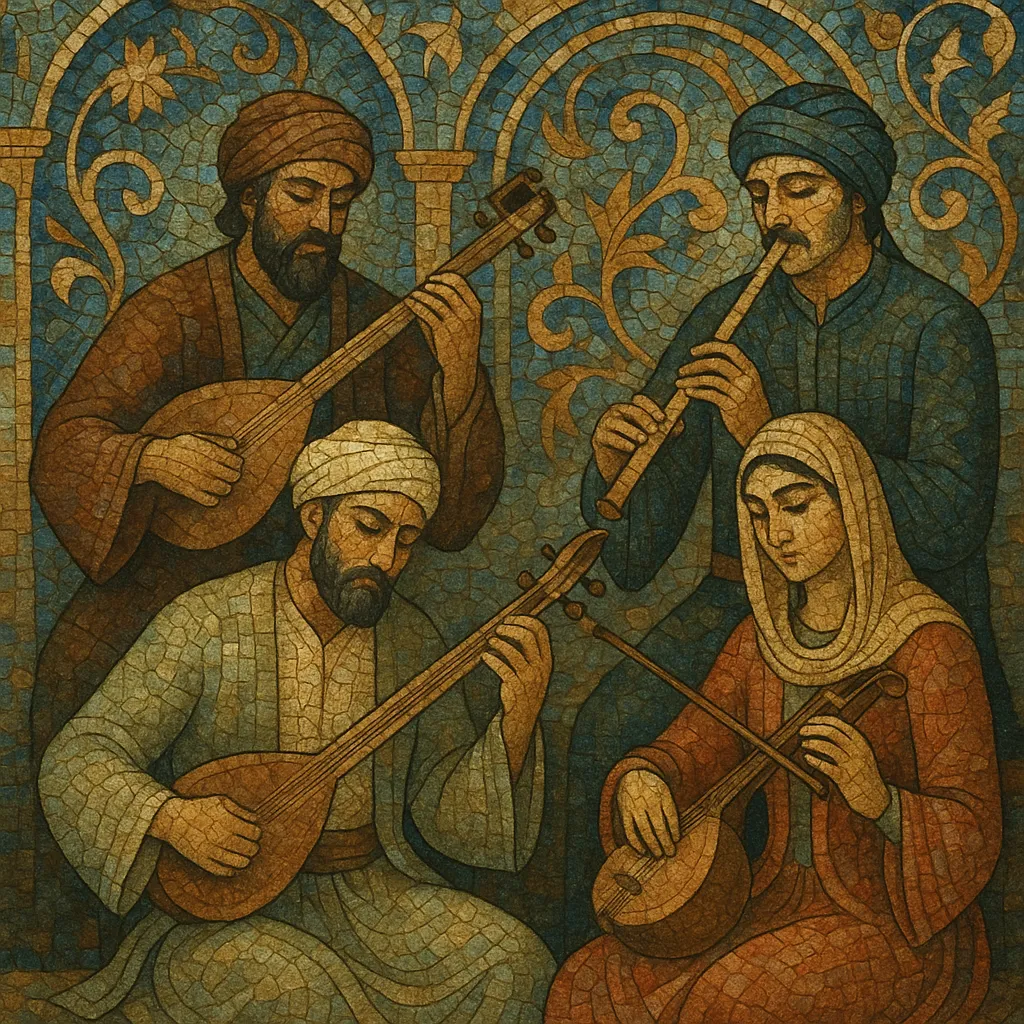Persian classical (musiqi-e asil) is the art-music tradition of Iran centered on the modal system called dastgāh and its body of canonical melodies known as the radif. Performances are typically intimate and improvisation-forward, unfolding through a succession of gusheh (short melodic pieces) within a dastgāh, guided by recognizable cadential gestures (forud) and a central tone (shāhed).
Its sound world features nuanced microtonal inflections using koron (lowered) and sori (raised) accidentals, fluid rhythmic freedom in avāz (non-metric improvisation), and contrasting metered forms like pishdarāmad, chahārmezrāb, tasnif (song), and reng (dance). Core instruments include tar, setar, kamancheh, santur, ney, and tombak (tonbak), with the human voice employing elaborate ornaments (tahrir). The repertoire draws on classical Persian poetry (Hafez, Rumi, Saadi), creating a contemplative, mystical, and deeply expressive aesthetic.
Persian court music predates Islam, with Sasanian-era figures like Barbad attested in literature. After the Islamic conquests, Persian scholars and musicians were central in shaping urban art music in Abbasid Baghdad, where theoretical exchanges with Arabic traditions created a shared modal heritage.
From the Safavid period onward, Iranian courts and urban centers nurtured a distinct Persian art-music practice. During the Qajar era (19th century), the modern form coalesced: Aqa Ali Akbar Farahani and his sons Mirza Abdollah and Mirza Hossein-Qoli codified the radif—an organized corpus of gusheh grouped into seven primary dastgāh (e.g., Shur, Mahur, Segah, Chahargah, Rast-Panjgāh, Nava, Homayun) and their āvāz sub-modes (Abu Ata, Bayāt-e Tork, Afshari, Dashti, Esfahan). This system established the pedagogical backbone still used today.
The Pahlavi era introduced radio, recording, and conservatories. Figures like Ali-Naqi Vaziri advocated new notations and orchestration, while masters such as Abolhasan Saba, Ahmad Ebadi, and Noor-Ali Boroumand preserved oral pedagogy. Institutions like the Center for the Preservation and Propagation of Iranian Music and ensembles like Chavosh (with Mohammad Reza Lotfi, Hossein Alizadeh, Parviz Meshkatian) revitalized the tradition with new compositions grounded in radif.
Despite shifting cultural policies after 1979, Persian classical endured and flourished, both in Iran and the diaspora. Iconic artists (e.g., Mohammad-Reza Shajarian) and global collaborators (e.g., Kayhan Kalhor) brought the music to international stages, highlighting its sophisticated modal language, microtonal nuance, and poetic depth.


